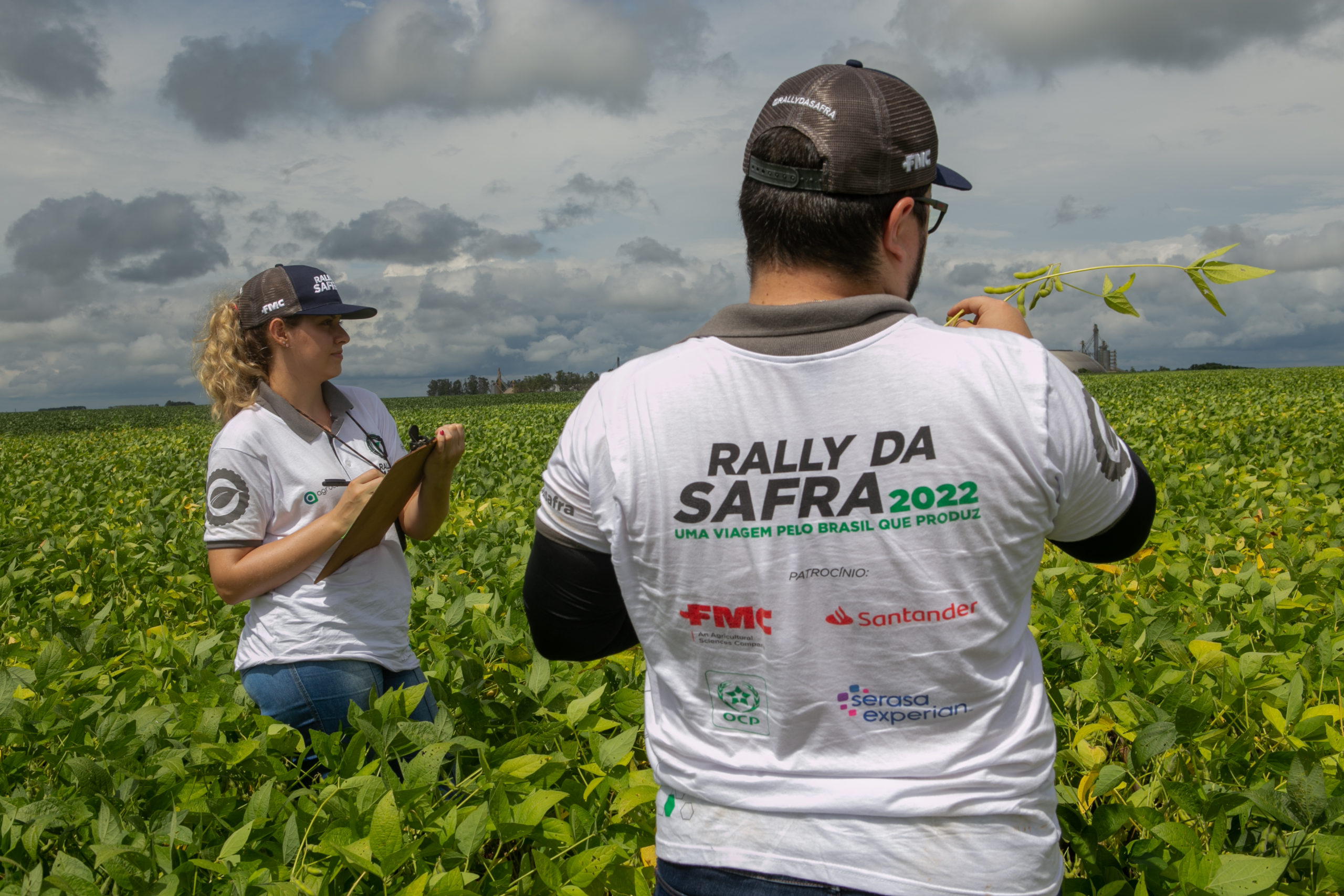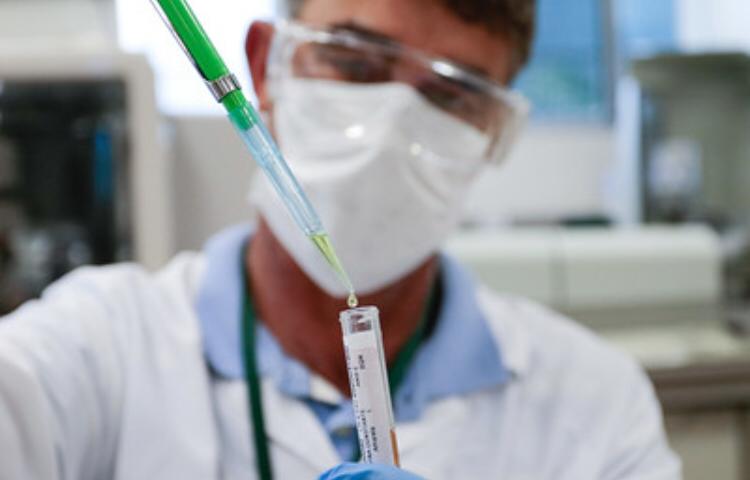Main producing regions, to be covered by the Rally da Safra, present different scenarios, with good expectations for Mato Grosso, Goiás, North of Mato Grosso do Sul, Minas Gerais and MAPITO-BA – while the South of Mato Grosso do Sul, São Paulo , Paraná, Santa Catarina and Rio Grande do Sul accumulate irreversible losses
With the expectation of finding the main Brazilian producing regions in two very different situations, the Rally da Safra 2022, the largest technical expedition of Brazilian agribusiness, started the evaluation of crops on Sunday, January 9. In part of the country, formed by Mato Grosso, Rondônia, North of Mato Grosso do Sul, Goiás, Minas Gerais and MAPITO-BA, the soybean maintains excellent conditions, however the producers fear the risk that the excess of rainy and cloudy days affect the weight and quality of the grains.
In the southernmost half of Brazil, the lack of rain and high temperatures since the end of November have caused irreversible losses to the productive potential of crops in Paraná, southern Mato Grosso do Sul, São Paulo, Santa Catarina and Rio Grande do Sul. The problems were enough to reduce the production estimate to 134.2 million tons, 7% below pre-planting projections, which were 144.3 million tons. The planted area is estimated at 40.7 million hectares – 5% greater than the previous crop. An important aspect: it is necessary that it rains again in this part of the country so that the problems do not continue to worsen. Production currently projected is 2.95 million tons lower than that of the 20/21 crop. “Climatic problems prevent a third consecutive record harvest, after 19/20 and 20/21”, says André Debastiani, coordinator of the Safra Rally. The average soybean yield in Brazil for the 21/22 crop is estimated at 55 bags/hectare, the lowest since the 15/16 crop when Brazil recorded 49.3 bags/hectare.
It is a frustrating start to the year, given the good start of the harvest. Sowing was the fastest in history, surpassing that of 18/19, driven by the early regularization of rains in important producing regions.
A good part of the accumulated losses is concentrated in early soybean crops (sown in the second half of September and in the first half of October), located in states affected by the drought. Therefore, the biggest losses are in the West of Paraná, with a reduction in the estimate of average productivity in the state to 45.0 bags per hectare, 26% below the results of the previous harvest.
There are also significant losses in Rio Grande do Sul, whose productivity is now forecast at 48.0 bags per hectare, down 17% over 20/21. The lack of rain and the high temperatures harmed a good part of the soybeans in the critical period of flowering, increasing the abortion of flowers and reducing the potential of the crop.
Mato Grosso do Sul is a different case: the drought in the South region lowered the state’s estimate to 48.5 bags per hectare, 17% lower than the previous crop, although the crops in the North are in excellent condition, with the possibility of even beat the record. “An important aspect to consider is that, in all regions most affected by the drought, it is necessary for the rain to regularize as soon as possible to prevent the damage from increasing”, says Debastiani.
The first problematic regions that the Rally da Safra 2022 will evaluate will be the West/North of Paraná, covered from January 16 to 22, on a route that will pass through Maringá, Cascavel, Toledo, Palotina, Goioerê and Campo Mourão. It will be an opportunity to closely assess the damage caused by the drought and regionalize the losses between the different regions of the state.
Expectation of a good harvest in MT
In this first week of the Rally, the technicians are touring the Mid-North and West of Mato Grosso – where the expectation is still for a good harvest. The productivity projection for the state is 60.0 bags per hectare, 4% above 20/21, but the effects of low light, excess moisture on grain weight and quality and during harvest may limit the good result. “It’s something that the Rally teams are trying to assess in the field, whether it’s collecting samples or collecting data on the first areas collected”, says Debastiani.
Soybean crop conditions are also good in Minas Gerais (with an expected yield of 63.0 bags per hectare, 1% above 20/21), Goiás (62.6 sc/hectare, 2% increase), MAPITO ( 55.7 sc/hectare, 1% increase) and in BA, which, despite showing a reduction of 5% compared to the previous record crop, has an estimated productivity of 63.5 sc/hectare. Confirmation of these results will depend on the weather until harvest, which, in some regions, is beginning to be hampered by excessive rainfall.
The soy evaluation stage of the 2022 Crop Rally will feature 17 teams. Along the route, it is planned to hold a regional event for producers in Luís Eduardo Magalhães/BA, on March 10th. The last team of this stage ends its work on March 27, after traveling through the west of Santa Catarina and Rio Grande do Sul.
Second crop corn
The second crop corn evaluation stage will begin on May 15, with six teams – the first two traveling through the West and Middle-North of Mato Grosso. Two others will evaluate crops in the Southeast and East of Mato Grosso, North of Mato Grosso do Sul and the Southwest region of Goiás. The last teams will visit areas in the South of Mato Grosso do Sul and West of Paraná.
The current perspective is that, largely due to the accelerated planting of the summer crop, the second crop will be implemented in an excellent calendar. The forecasted production is 94.8 million tons, an increase of 56% over the previous crop, marked by a significant crop failure due to weather problems. The planted area is projected at 15.7 million hectares, with growth of 7% over the previous crop.
Between April and May, four Rally teams will be dedicated to visits to producers and regional events, initially scheduled to take place in Não-Me-Toque/RS (12/04), Cascavel/PR (19/04) and Rio Verde/GO (05/03).
More than 80 thousand kilometers will be covered in 11 states during the 19th edition of the Rally da Safra. The expectation is to collect 1600 samples in the field. Organized by Agroconsult, the technical expedition is sponsored by Banco Santander, FMC, OCP Fertilizantes and Serasa Experian and nationally supported by Hidrovias do Brasil and Unidas Agro.
The work of the teams and the complete itinerary of the expedition can be followed at http://bit.ly/RallyRedesSociais
Carol Silveira
Director



